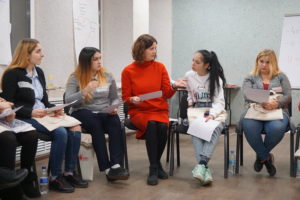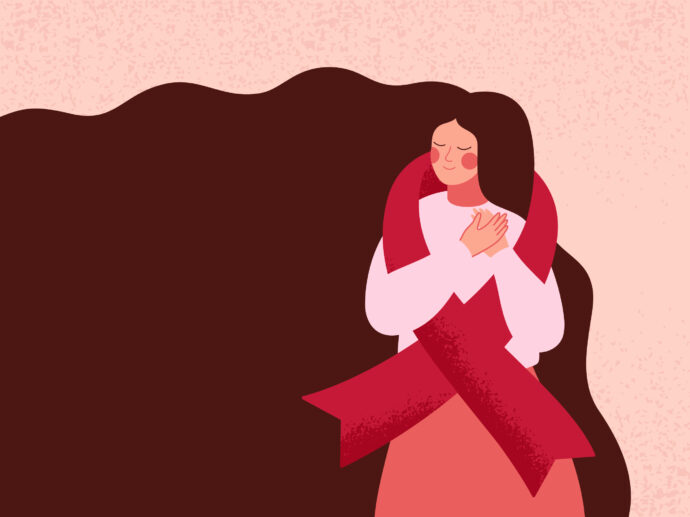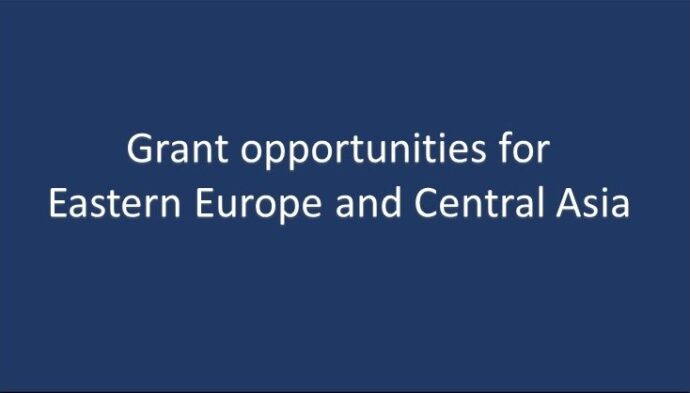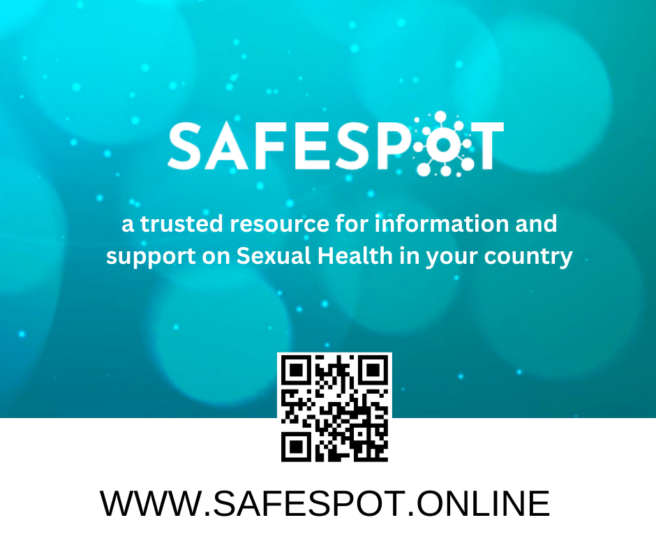 For several years, International Charitable Foundation “AIDS Foundation East-West” (AFEW-Ukraine), a partner of AFEW International in Ukraine, has been successfully implementing programs aimed at working with adolescents who use psychoactive substances. This activity results in hundreds of strong and self-confident adolescents who change their lives and lives of people around them for the better.
For several years, International Charitable Foundation “AIDS Foundation East-West” (AFEW-Ukraine), a partner of AFEW International in Ukraine, has been successfully implementing programs aimed at working with adolescents who use psychoactive substances. This activity results in hundreds of strong and self-confident adolescents who change their lives and lives of people around them for the better.
Anastasia Shebardina, AFEW-Ukraine Senior Project Manager, told AFEW International how it all began and how her organization managed to mobilize the community of adolescents who use drugs through Bridging the Gaps program.
Why does Ukraine pay particular attention to working with youth?
Back in 2012, when Bridging the Gaps (BtG) program just started in Ukraine, we understood that most of the projects in our country are aimed at working with adult drug users. There was nothing like this for young people, and this is why we focused our work on adolescents who use psychoactive substances.
What is the peculiarity of your approach to working with youth?
Our work can be divided into 3 different directions. The first one is the so-called low-threshold services, when an adolescent can apply for a particular service one or more times through the project. For example, he/she can be tested for HIV, get contacts of organizations where he/she can get help. As a rule, such an adolescent is not ready for systematic work and drastic changes. The second direction is working with adolescents who come with a specific request for help, requiring a comprehensive solution. For example, often these young people may have problems in educational institutions, difficulties with documents etc. We invite an adolescent to join a case management program in one of the youth friendly centers. In total, there are 4 such centers under the BtG program in Ukraine. They are located in Kropyvnytskyi, Poltava, Kharkiv and Chernivtsi. Case management in these centers is designed for a period of 3 to 6 months. But if youngsters have a need to get help longer, we extend the program for a longer period.
The third area is rehabilitation programs for adolescents who are willing to change and want to reduce or completely stop drug use. One of such programs has already been working in Chernivtsi for a long time; it is designed for six months. This is a structured program, within which an adolescent gets several obligations – he/she needs to come to the center regularly, participate in group events, and so on. Recently, we started a similar rehabilitation program in Kharkiv.
What difficulties did you encounter at the start?
At first, we were not sure whether public organizations in Ukraine would be able to work with youth without having official permissions from parents and governmental bodies. However, having analyzed Ukrainian legislation, we realized that it didn’t have a clear regulation on how to work with adolescents or any kinds of restrictions.
There were also difficulties of a different nature: firstly, since young people rarely use injecting drugs, they almost never turn to harm reduction programs for services, so accessing this group was complicated. As for rehabilitation programs, they also could not reach young people, as they are primarily designed to work with adult drug users and do not take into account the peculiarities of working with adolescents. Participation of adolescents in such rehabilitation programs could do more harm than good.
At first, it was hard, because public organizations had mainly worked with adult drug users and needed to learn the peculiarities of working with adolescents from scratch.
However, the biggest difficulty was working with parents. The fact is that most often an adolescent who has problems in life and who practices risky behavior, does not have good contact with the parents. Therefore, it was difficult to expect that adults would behave actively and participate in our activities when a complicated situation arose. Some are very busy, some just don’t want to come to the centers, some believe that parents should not help children solve their problems with risky behavior, and this is the job of state institutions. They simply do not understand that in many cases it is working with parents that really helps to correct the situation.
 What has changed over 8 years in the field of working with youth?
What has changed over 8 years in the field of working with youth?
Young people got noticed – this is the main change! People making youth-related decisions locally have become more loyal to them, more open to dialogue. Programs to counteract the spread of drugs and prevent HIV that are being developed at the local regional level have started targeting adolescents as a separate group. The attitude of specialists towards youth is gradually changing, they began to understand how important it is to have special programs for the younger generation. For instance, we began to receive much more requests from other organizations. Educational institutions and services that work actively with adolescents redirect to us those who have problems with the use of psychoactive substances.
What is the goal of our activity?
Our goal is to help teens reach their goals. Of course, we would like adolescents to change their behavior to a safer one so that they stop using psychoactive substances. But it’s important to understand what adolescents come with initially. Most often they come with a question that is not directly related to drug use. And our experience shows that when these issues are resolved, they also change their behavior in relation to the use of psychoactive substances. Various unresolved situations in life lead to risky behavior: self-doubt, conflicts, difficulties, somatic diseases, failures. Therefore, in relation to young people it is so important to work with the problem as a whole. Also, you need to work with what is important for adolescents, and not what we, adults, think would be better for them. Any social programs should work that way. The more tools we give people to deal with difficulties, the easier it is for them to change the situation in other areas of life. We give an adolescent the resources to become stronger. But of course, we also educate young people about overdoses, safe sex and drug use.
You have a special program for working with youth leaders. What is it like?
A few years ago, it seemed to us that adolescents were not very interested in public activities. It was difficult for us to find an active adolescent who publicly talked about his/her problems and problems of the social group. Therefore, we started to actively explore various opportunities for attracting youth. Thus, we began to search for our most active clients, trained them, and involved in the organization of events. In 2018, we gave them an opportunity to create their own projects and started to issue grants for leadership initiatives. We were telling the participants how to create projects, set indicators, implement activities and write reports. In the end, we invited them to create their own small projects, where they will do everything from beginning to end by themselves – write a plan, report, implement. The first year was difficult, but since last year we noticed that this direction has become the most effective in our work on mobilizing community and attracting leaders. The bottom line is that when you give adolescents the opportunity to be responsible for something, when they feel that this is their own project, then they change a lot.
 Which projects in the leaders’ program were most remarkable?
Which projects in the leaders’ program were most remarkable?
All projects are interesting in their own way. Personally, I really noted an online magazine in Chernivtsi. It was called “This magazine is as good as the son of mother’s friend”. It contained articles on completely different topics, the youngsters interviewed representatives of the police, doctors, etc. Adolescents were reading this magazine, commenting online. Many of them, having read the articles in the magazine, would come to our program.
There was also an interesting project on creation of a cinema club. Adolescents selected films by themselves, organized shows, handed out tickets. One could only enter the club by completing a special task. This gaming element was especially attractive for young people.
I should say that before this project, many adolescents came to us with a certain caution, because they were usually brought by parents or the police. After the leaders’ project, we noticed that it was the leaders who became the first contact point for such adolescents. Thus, the leaders were peer consultants. Since 2018, we have supported 9 projects like that. In 2020 there will be a continuation of the project.
How exactly do teenagers change during their participation in such projects?
When we conducted a focus group with leaders, we heard that thanks to the project, someone changed their relationship with parents, it became easier for someone to express their point of view, to analyze problems without quarrels. Someone said that he plans to continue studying professions, some saw that projects can really help, some stopped spending all their free time on the street. The youngsters really changed for the better.
I remember that one of the participants even started working as a social worker in another organization. This is a very significant indicator, because it means that he evaluated social activities in such a way that he himself wanted to do it. He saw the value of helping others, changing lives. I also noticed that adolescents are pleased to conduct various trainings and seminars on their own, they feel they are the owners of unique knowledge and are proud of it. In schools, they are no longer afraid to go to the blackboard. Teachers sometimes ask us what we did with an adolescent that resulted in him starting to raise his hand in class. We just developed his self-confidence.
In September you plan to host the MARA Youth Conference. What is special about this event?
The MARA 2020 Conference – Most-At-Risk Adolescents – will be the second. We conducted the first one in 2015 at the end of the first phase of Bridging the Gaps project. This is a conference on the well-being and health of adolescents. It is not limited to any key groups, but it is important to note that this is the only conference in Ukraine that focuses on the adolescents at risk. We have created a working group of representatives from various organizations, and together we choose which topics are interesting for discussion, who should be invited as speakers. Last time the conference was opened by adolescents themselves – in order to do that, they had gone through a training in public speaking beforehand. This year we will strengthen this component: the conference will have a separate section where adolescents will participate on equal terms with adult specialists.




